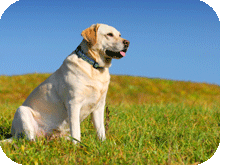
This mailer has been provided as an avenue of dispersing information related to landscape architecture in hopes of fostering greater understanding and collaboration between professions. Topics address issues that affect the built environment within which we live.
A Look at the Basic Features of a Successful Dog Park
"If it wasn't for dogs, some people would never go for a walk", Author Unknown
Since the installation of the first official dog park, (Ohlone Dog Park in Berkley, CA) over 30 years ago, the popularity of dog parks has rapidly increased.1 Strict leash laws in many urban areas are one reason for this rise in dog park popularity as there are fewer options now for unleashed play and exercise. Throughout the Country pet owners have and continue to lobby for the construction of dog parks within their communities. In many cases this pressure results in short-term solutions that include simple fenced in sections of parks which eventually are not maintained resulting in a loss of original functionality and purpose. A long-term approach for the design of successful dog parks will require extensive planning, coordination and funding. If this approach is taken the community will enjoy a well-maintained, functional, and comfortable recreational destination. The following are some of the basic ingredients necessary for long-term success.
 Dog Owners Benefit Too - Traditionally, dog parks were thought to be beneficial for urban dogs, kept as pets, by promoting important methods of teaching social interaction, exercise and off-leash play. However, for every dog that comes to a park, there is an owner that attends as well. A benefit that is not as widely acknowledged is that owners of dogs tend to enjoy the dog park social scene as much as dogs do. It is not uncommon for dog park patrons to openly confess that their dog park attendance is based on intent to engage in social interaction with other dog owners rather than to provide exercise for their dog. In fact, at a dog park community meeting held recently a dog owner recounted her story of meeting and falling in love with a man at a dog park. This man eventually became her husband and together they have fond memories of their dog park courtship. Designing for the pet owner is a crucial key to success.
Dog Owners Benefit Too - Traditionally, dog parks were thought to be beneficial for urban dogs, kept as pets, by promoting important methods of teaching social interaction, exercise and off-leash play. However, for every dog that comes to a park, there is an owner that attends as well. A benefit that is not as widely acknowledged is that owners of dogs tend to enjoy the dog park social scene as much as dogs do. It is not uncommon for dog park patrons to openly confess that their dog park attendance is based on intent to engage in social interaction with other dog owners rather than to provide exercise for their dog. In fact, at a dog park community meeting held recently a dog owner recounted her story of meeting and falling in love with a man at a dog park. This man eventually became her husband and together they have fond memories of their dog park courtship. Designing for the pet owner is a crucial key to success.
Dog Park Etiquette - Every dog park must have posted rules and regulations stating the owner's responsibilities. These signs should be posted at the entry to the park and may include items related to park hours, dog size, age and breed restrictions, clean-up requirements, food and toy restrictions, owner age requirements, dog health requirements, fines and penalties and maximum occupancy limits. Dogs should be observed at all times while inside the park.
Dog Park Site Features - Successful dog parks will incorporate as many maintenance reducing features and patron comforts as possible. The following items are essential:
Separate Dog Runs - Separate play areas for large and small dogs will minimize conflicts between small dogs and larger aggressive dogs. Four to six foot fencing with concrete mow bands is the most commonly constructed barrier for dog parks, though walls, water bodies and hedges are also options with merit.
2 or 3 Gate Entry - A very effective method of minimizing dog conflicts when entering the park and avoiding unleashed escapes by opportunist dogs are two and three gate entry configurations. These systems create entry transition areas where an owner can unleash and prepare a dog prior to park entry or upon exit from the park. A three gate configuration provides separate entry and exit gates to and from the park.
Access to Water - A water fountain should be provided to allow dogs and owners alike to hydrate themselves on hot days. The fountain should be designed appropriately to avoid puddles around the fountain, meet ADA requirements, and allow for maintenance access. Most manufactured fountains have an optional pet bowl at ground level for dog access.
Waste Disposal - A means by which patrons can dispose of dog waste must be provided in order to keep the grounds clean and limit damage to the park surface (grass). The most commonly provided feature is a doggie bag dispenser and trash receptacle.
Site Seating - Seating is important for the patrons of the park (not so much for the dogs). Adequate seating in locations that will provide clear unobstructed views of the dog play area should be provided. Seating should be installed on a hard surface that drains well and resists high traffic. Some enthusiasts believe that wood or plastic seating is best as it will absorb an impact from a running dog more readily.
Shade - Shade is a high priority for both dogs and patrons. A cool environment located in a strategic place can be provided by trees, trellises, arbors and picnic shelters.
Agility Equipment - If funds permit, agility equipment will provide the dog and owner with variety and additional activities that will limit opportunities for dog conflicts.
 Dog Park Landscaping - Dog parks vary in appeal and comfort, primarily based on the level of landscape maintenance that occurs. Some parks resemble desert wastelands while others mimic prairie grasslands. There are several types of landscape surfaces that can be used in dog parks:
Dog Park Landscaping - Dog parks vary in appeal and comfort, primarily based on the level of landscape maintenance that occurs. Some parks resemble desert wastelands while others mimic prairie grasslands. There are several types of landscape surfaces that can be used in dog parks:
Grass - Grass is commonly used and can be very effective if maintained correctly. Species of grass that tend to do better in dog parks include tall and red fescue, perennial rye and horizontal creeping grasses.4 No-mow grasses are also fairly effective at dispersing the potency of dog urine and do not exhibit burn as readily as other turf grasses. Transpiration from the turf grasses also tends to lower temperatures in the surrounding vicinity.
Artificial Grass - Artificial grass is a common surfacing used because it is not damaged by dog urine and does not require weekly maintenance. It is expensive however and can be extremely hot during the summer months. (See more here)
Decomposed Granite - Decomposed granite is used commonly in high traffic areas because it wears well and does not require excessive maintenance and or replacement. It is not accessible during wet weather however, and is dusty and dirty at times.
Shrubs & Trees - Shrubs and trees are important features that can soften the appearance of the park. Trees provide necessary shade and provide relief from the sun on hot days. Shrubs and trees selected for use in the park should be non-toxic to dogs and should be located away and protected from main activity areas.
Irrigation - Irrigation in turf areas should be frequent in order to limit turf burn. Studies show that areas subjected to dog urine should be washed within 12-24 hours to avoid irreversible damage.4
These are just a few of the many items to think about during the design of a dog park. Just as important as the design, however, is the long-term maintenance of the park. As the ultimate goal is a beautiful lasting park that fosters community enjoyment and participation, before starting out on any dog park venture, methods of securing funding for its maintenance should be top priority.
Prior Issues of Interest
Playground Safety: What's the Big Deal?
Artificial Turf: A Pros & Cons Review
The Vestibular and Proprioceptive Sensory Systems
The next time you need a Landscape Architect on your project, consider O'Dell Engineering's Landscape Architecture Department.
Services include:
- Park and Playground Design
- Recreational Facility Design
- Site Planning
- Streetscape Design
- Urban Design
- Commercial Design
- Model / Production Homes
- 3-D Visualizations
- Graphic Design
- Arboriculture Consulting
- Playground Inspection
References:
1-Allen, Laurel. Dog Parks:Benefits and Liabilities. University of Pennsylvania. PA, 2007.
2-Gillette, Felix. Who let the dog parks out?. Landscape Architecture. January, 2004. pp 70-74. 3-Harivandi, Ali. Lawns 'N' Dogs. University of California Division of Agriculture and NAtural Resources. Publication no. 8255. Oakland CA. 2007.
4-Thompson, Steve. "Dog-on-it" Lawn Problems. Purdue University Veterinary Hospital Wellness Clinic. West Lafayette, IN. Web access Aug. 2009.www.plantanswers.tamu.edu/turf/ dog_lawn_problems.html.

Author: Chad Kennedy, Landscape Architect
This informational article provided by O'Dell Engineering - 1165 Scenic Drive, Suite A, Modesto CA 95350
